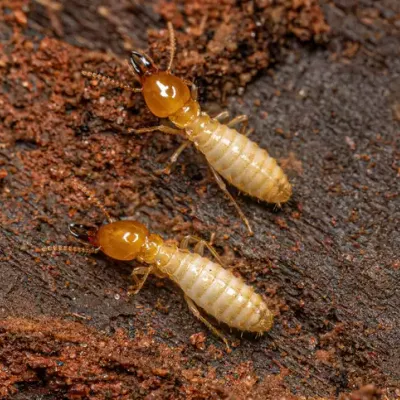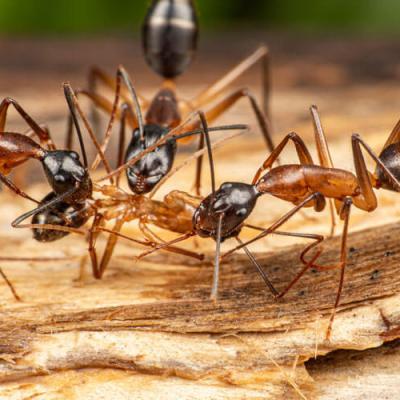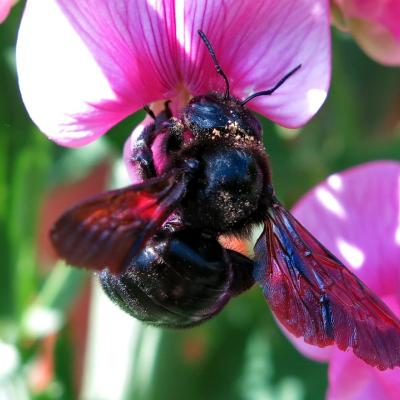Wood-Destroying Insects 101: Identifying and Preventing the Biggest Threats to Your Home

Your home is likely your biggest investment—but it could also be under silent attack. Wood-destroying insects like termites, carpenter ants, and carpenter bees are common across the U.S. and can cause serious damage if left unchecked. Understanding what these pests look like, how they behave, and how to stop them is the first step in protecting your property.
In this guide, we’ll break down the most common wood-destroying insects, how to spot the warning signs, and what you can do to prevent costly damage.
Why Wood-Destroying Insects Are a Problem
Unlike visible pests like wasps or cockroaches, wood-destroying insects often work quietly behind the scenes. By the time homeowners notice a problem, significant damage may already be done. These pests can weaken structural wood, damage framing, and even reduce your home’s resale value. The longer they go unnoticed, the more expensive the repairs can become.
Termites

Termites are perhaps the most feared of all wood-destroying insects—and for good reason. They consume wood 24/7 and can chew through support beams, flooring, and even drywall without any immediate visible signs.
What They Look Like:
- Soft-bodied and about ¼ to ½ inch long
- Creamy white to brown in color
- Winged "swarmers" have two pairs of equal-length wings and straight antennae
Signs of Infestation:
- Mud tubes on exterior walls or foundation
- Hollow-sounding or sagging wood
- Discarded wings near windows or doors
- Cracked or bubbling paint (which may appear like water damage)
Prevention Tips:
- Keep soil and mulch away from wooden structures
- Repair leaky pipes and reduce moisture in crawlspaces
- Schedule annual termite inspections with a licensed professional
Carpenter Ants

Unlike termites, carpenter ants don’t eat wood—they excavate it to build their nests. Their presence can still result in extensive structural damage over time, especially in damp or decaying wood.
What They Look Like:
- Large (up to ½ inch), black or red-black in color
- Elbowed antennae and a narrow waist
- Winged reproductives may be seen swarming in spring
Signs of Infestation:
- Piles of sawdust-like frass near walls or baseboards
- Faint rustling sounds in walls
- Occasional sightings of large ants indoors, especially near windows
Prevention Tips:
- Trim back tree branches and shrubs touching the house
- Seal gaps around doors, windows, and utility lines
- Eliminate standing water and repair moisture-damaged wood
Carpenter Bees

Carpenter bees may look like bumblebees, but they behave very differently. These solitary insects bore round holes into wood to lay their eggs, often targeting soffits, decks, and eaves.
What They Look Like:
- Similar to bumblebees but with a shiny, black, hairless abdomen
- Males are aggressive but cannot sting; females sting only if provoked
Signs of Infestation:
- Perfectly round ½-inch holes in wood surfaces
- Sawdust beneath holes
- Buzzing or hovering activity around eaves or fascia boards
Prevention Tips:
- Paint or seal exposed wood to deter nesting
- Fill existing holes with caulk and repaint the surface
- Use traps or aluminum flashing in problem areas
Other Wood-Destroying Insects to Watch For
While termites, carpenter ants, and bees are the most common threats, other insects can also damage wood:
Powderpost Beetles
- Tiny beetles that leave behind small exit holes and powdery frass
- Often infest hardwoods like flooring, furniture, or trim
Old House Borers
- Large beetles that tunnel into structural lumber
- Exit holes are oval-shaped, and infestations may persist for years
How to Identify Which Pest You Have
Telling these pests apart can be tricky. Here’s a quick guide:

If you're still unsure, try to catch a photo or sample and contact a professional for accurate identification.
When to Call a Professional
Wood-destroying insects require fast, effective treatment. DIY methods may provide temporary relief but rarely solve the root of the issue—especially when nests are deep within walls or foundations.
A professional pest control expert can:
- Accurately identify the insect
- Assess the extent of the damage
- Apply targeted treatments to eliminate the problem
- Provide ongoing monitoring and prevention
Contact Clancy Brothers Pest Control
Wood-destroying insects may be small, but their impact on your home can be massive. Whether you’re seeing signs of termites, spotting carpenter bees in your eaves, or finding mysterious sawdust piles, acting quickly is essential.
Don’t wait until the damage is done—schedule a pest inspection today and protect your home for the long run.
